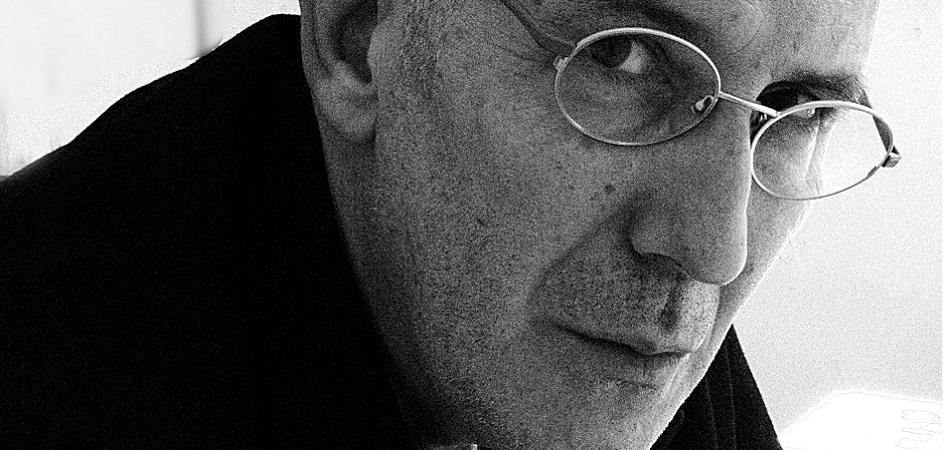Sustainable jewelry 'made in Spain': ethical (and precious) designs so as not to harm the planet
In recent years, a global transformation movement towards sustainability has become evident, which has also affected fashion, one of the most polluting industries on the planet. The public is increasingly demanding designs with social and ecological awareness, as well as brands that produce timeless quality pieces trying to impact the environment as little as possible. Although we see numerous clothing firms moving towards this sustainable fashion, the jewelery sector is not yet as advanced in this area, but some Spanish houses are struggling to apply this conscious model to their pieces. We spoke with two of them, Rêver and LeHona, both born less than two years ago but already setting trends in their sector, and their creators explain exactly what sustainable jewelry is and how they believe it can benefit the planet.
SEE GALLERY
As they tell us from Rêver, their project stems from "the need to provide transparency within an opaque industry and the desire to do things differently and transcend beyond aesthetics and design". This was the reason why Daniela and Marta, its creators, decided to found a responsible firm making jewelry with a purpose, handcrafted in Spain from recycled gold and laboratory-created diamonds, which have the same chemical composition and crystalline structure. than those extracted from the mines. This allows them to move away from the mining activity and eliminate the intermediaries to control the entire process, from design to delivery.
Something similar happened to María Serrats, founder of LeHona, who says that she wants to "contribute to not compromising the needs of future generations by actions we take in the present." María received the "inner call", as she defines it, a year after her third daughter was born and, in her case, she emphasizes that she seeks to offer women something that she did not find for herself, "giving more weight to design , to the emotions that accompany buying a jewel and to sustainability".
- Write down these 7 keys if you want to make your wardrobe more sustainable
SEE GALLERY
What exactly does the term 'sustainable jewelry' mean?
From Rêver they explain that, by definition, sustainability refers to "the satisfaction of current needs without compromising the ability of future generations to satisfy theirs, guaranteeing the balance between economic growth, care for the environment and social welfare". In addition, they point out that in their sector they must take into account aspects such as the materials with which the jewels are made, where and how each piece is made, the production model and other factors such as packaging and durability. "Sustainable jewelry aspires to guarantee the balance between preserving and caring for the environment and its resources, economic growth and social well-being" they add from LeHona. For this reason, both brands use high-quality sustainable materials, have their workshop in Spain and work to order, creating incredible pieces that can perfectly be passed down from generation to generation.
The added difficulty in the jewelry sector
It is evident that starting a new project is always complicated, but this difficulty also increases when you want to work in an ethical and sustainable manner, -especially in such a traditional sector-, Daniela and Marta stand out. We must be clear about the commitment and fight for it in each of the steps of the production chain. However, from both houses they affirm that it is well worth investing resources and efforts in it, and that people value it. "Sustainable pieces are more expensive to make and you have to spend more time searching for them and subsequently trace them. Jewelry is related to the mining industry, which is one of the industries that has the greatest harmful impact on the planet, so Carrying out production in an artisanal and sustainable way, and applying principles of transparency and traceability, is key. But in order to apply these principles, you have to be committed and willing to make it a more expensive process," María tells us.

SEE GALLERY
The first step: the materials
Both firms point out the importance of working with ethical materials. In the case of María Serrats, she explains that they acquire verified metals and stones from legitimate sources, not involved in conflicts and following UN regulations. "It is a matter of priorities and choice, if you bet on it, even if the balance is costly, it is achieved. Luckily, there are more and more suppliers that guarantee the sustainability of sensitive and responsible materials and consumers – increasingly on the rise and that it is a sociological trend that allows sustainability to be a possibility," he adds.
At Rêver they use old pieces to work with that gold and give it a second life with the aim of reducing the negative impact of mining activity, something feasible since it is a metal that does not rust or discolor, so it can be recycled. many times. As for diamonds, they choose to create them in the laboratory with green energy and cutting-edge technology, which results in stones of exact quality, composition and aesthetics with less impact on the planet.
- Fashion to order, the alternative that unites trendy designs and sustainability
SEE GALLERY
A transversal concept
Once you have a conscious product, it is also essential to apply this philosophy to the rest of the production chain. "We know that we are not perfect and that working towards sustainability is a journey of continuous improvement, so we always try to be as sustainable as possible in all aspects" explain Daniela and Marta. "We deliver our pieces with boxes and bags made of FSC-certified paper and cardboard, from responsibly cultivated forests to guarantee the least impact."
In addition, both Rêver and LeHona work in artisan workshops in our country and create their pieces on request in order to promote responsible consumption. "We live in a fast-paced consumer society and I want to contribute to slowing down that pace by going back to the model made by hand and locally. Each piece is made specifically for a client, as I believe this will also minimize waste and the impact on our planet" highlights María , who also points out that producing outside of Spain would be much cheaper but is not interested in this, but also seeks to support Spanish workshops that are beginning to be at risk of disappearing and also guarantee care and excellent quality in each jewel.
SEE GALLERY
Educate the customer to buy wisely
Another important point of this type of pieces is their timelessness. Although we love to keep an eye on the latest trends and, from time to time, it is good to get a more daring design, the key so that both clothing, accessories and jewelery last for many years is, in addition to their quality, that have a design that will not go out of style in a few months or years. "LeHona is not a brand that follows trends. We could consider it to be a slow jewelry brand, where I give free rein to my creativity, designing freely and without letting myself be pigeonholed by a trend. They are not pieces for one season, but for an entire life, or more than a generation. Sustainability is now in fashion but in our case I want it to be real. The options that exist to create the pieces that I want are wide, yes, at a much higher cost for the fact of following a sustainable model.
The same goes for Rêver: "We create jewelery to wear for a lifetime and hopefully it will pass from generation to generation, it would be our best gift. In our brand you can find more classic pieces, those of a lifetime that you will never take off, and designs In addition, we also offer a tailor-made service to make all those pieces that our customers dream of come true".
- The new eco initiatives that will change the industry and the planet
SEE GALLERY
Sustainability: fad or real concern?
As we said at the beginning of this article, more and more companies are seeking to produce in an ecological way and have as little impact on the planet as possible, but the question is unavoidable: do they do it because it is fashionable or because it really is an issue that matters to them? ?. "It's a mix" says María "- it's fashionable, but there are brands like LeHona that really believe in it. The important thing is that there is a personal conviction, an effort to embark on a different path and that sustainability is a reality. principle of transparency and traceability". For their part, Daniela and Marta believe that they have seen many examples of image washing resorting to this type of marketing, but that "beyond the reasons why they do it, the important thing is that a change is being made. this need for change because we consumers have understood that our actions in the present will condition our future".
It is clear that, although it is more progressive than it should be, little by little the message is penetrating the population, and both brands agree that the commitment to sustainability is here to stay. "It is a problem that affects us all and I think that raising collective awareness helps to talk about it more and more, to make us more aware of the need to provide ecological, ethical and sustainable solutions. After all, , is trying to be empathic with our surroundings. And this makes us consider what to buy and what not" says María.
SEE GALLERY
What should we take into account when buying sustainable jewelry?
"For us there are two fundamental points, the materials with which we work and how and who produces these jewels" point out Daniela and Marta. "In our case, we try to ensure that each purchase at Rêver is a conscious purchase and that our actions have the minimum impact on the planet and on people." María, for her part, adds that, at an individual level, it is important not to stick only with the term, but "understand what lies behind the words, what guarantees the brand offers and how the production processes and selection of materials are "
HELLO! The total or partial reproduction of this report and its photographs is prohibited, even citing its origin.








